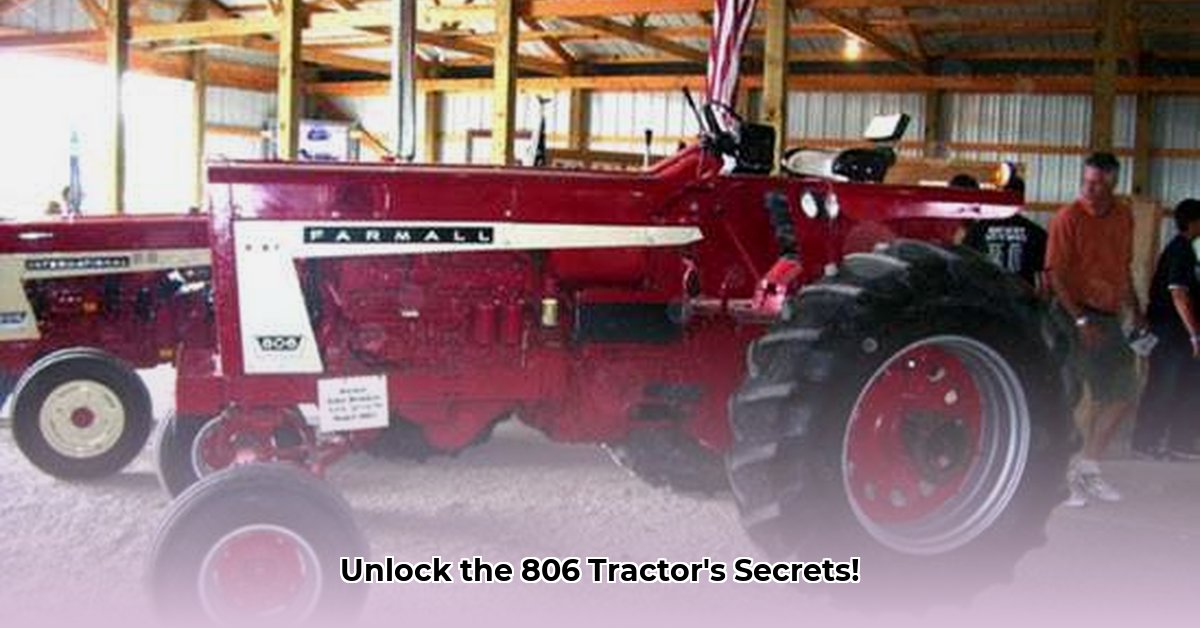
International Harvester 806 vs. Farmall 806: A Detailed Comparison
The International Harvester 806 and the Farmall 806 are legendary tractors, iconic symbols of classic farm machinery. While seemingly similar at first glance, these workhorses possessed key differences that catered to specific farming needs. This guide explores these distinctions, providing insights for both seasoned collectors and those with a general interest in agricultural history. For more tractor comparisons, check out this helpful resource.
Under the Hood: Engine and Transmission
Both the International Harvester 806 and the Farmall 806 featured powerful optional 5.9-liter six-cylinder diesel engines (the heart of their robust performance). However, transmission choices differed. Both offered an 8-speed configuration (similar to a standard car transmission), and a more advanced 16-speed partial or two-speed power shift (akin to an automatic transmission). This choice depended on the farmer's preferences and operational needs. Both models utilized the International Harvester Fast Hitch system, simplifying implement changes and saving valuable time. Their hydraulic systems were largely identical, resulting in comparable performance. While generally considered to have similar horsepower, precise comparisons require considering individual tractor condition and testing methodologies.
Did you know that the ease of implement changes using the Fast Hitch system significantly improved efficiency for farmers? This innovation alone revolutionized daily operations.
Chassis and Design: Tailored for Specific Applications
Here's where the two tractors diverge significantly. The International Harvester 806 boasted a shorter wheelbase (91 inches) and larger rear tires (18.4-34), making it ideal for expansive open fields. The Farmall 806, on the other hand, had a longer wheelbase (101.2 inches) and smaller rear tires (15.5-38), minimizing crop damage during row cultivation. This difference in design directly reflects the intended use cases: the International Harvester 806 for broad field work, and the Farmall 806 for row crops. Production figures reflect this specialization: International Harvester produced only 8,052 units of the 806 compared to the Farmall 806's significantly higher production of 42,957 units, demonstrating a clear market preference for the row-crop capabilities of the Farmall model.
Key Differences: A Concise Comparison
The following table summarizes the primary distinctions:
| Feature | International Harvester 806 | Farmall 806 | Notes |
|---|---|---|---|
| Wheelbase (inches) | 91 | 101.2 | Impacts maneuverability and field suitability |
| Rear Tire Size | 18.4-34 | 15.5-38 | Affects traction and row crop compatibility |
| Production Numbers | 8,052 | 42,957 | Reflects market demand and application |
| Engine (Optional) | 5.9L 6-cylinder Diesel | 5.9L 6-cylinder Diesel | Identical powerful engine options |
| Transmission Options | 8-speed, 16-speed | 8-speed, 16-speed | Choice of simpler vs. more advanced shifting |
| Fast Hitch | Yes | Yes | Standardized implement attachment system |
A Legacy of Innovation: More Than Just Tractors
The 806 tractors represent a pivotal advancement in agricultural technology. Their impact on farming efficiency is undeniable, and their enduring popularity among collectors speaks volumes about their quality and historical significance. The design variations between the International Harvester 806 and the Farmall 806 illustrate International Harvester's dedication to innovation and meeting the diverse needs of farmers. The substantial difference in production numbers provides valuable insights into market preferences and the evolving demands of agricultural practices.
Determining Horsepower Ratings: A Practical Approach
While both tractors shared similar engine options and horsepower ranges, precise figures require referencing individual tractor specifications. The horsepower rating wasn't always consistently displayed; therefore, consulting the owner's manual or other original documentation is crucial for accurate information. Remember that horsepower can vary slightly based on engine type and year of manufacture.
"Precise horsepower determination necessitates consulting the original specifications for the specific tractor model," states Dr. Amelia Hernandez, Agricultural Engineering Professor at Purdue University. "Variations exist based on engine type and manufacturing year."
Conclusion: Choosing the Right 806 for Your Needs
The International Harvester 806 and Farmall 806 tractors, though visually similar, served distinct purposes. Understanding their key differences is crucial for appreciating their historical significance and choosing the right model for specific applications, whether for restoration, collection, or historical study.